The deep dark secret of the watch world is that there are more bad watch brands out there than good ones. By “bad” I’m referring to the quality of the timepiece and the actual value you get for the price you pay. This is a list of brands that don’t fall into that category. This is a list of the good guys out there in the watch world – the true best affordable watch brands.
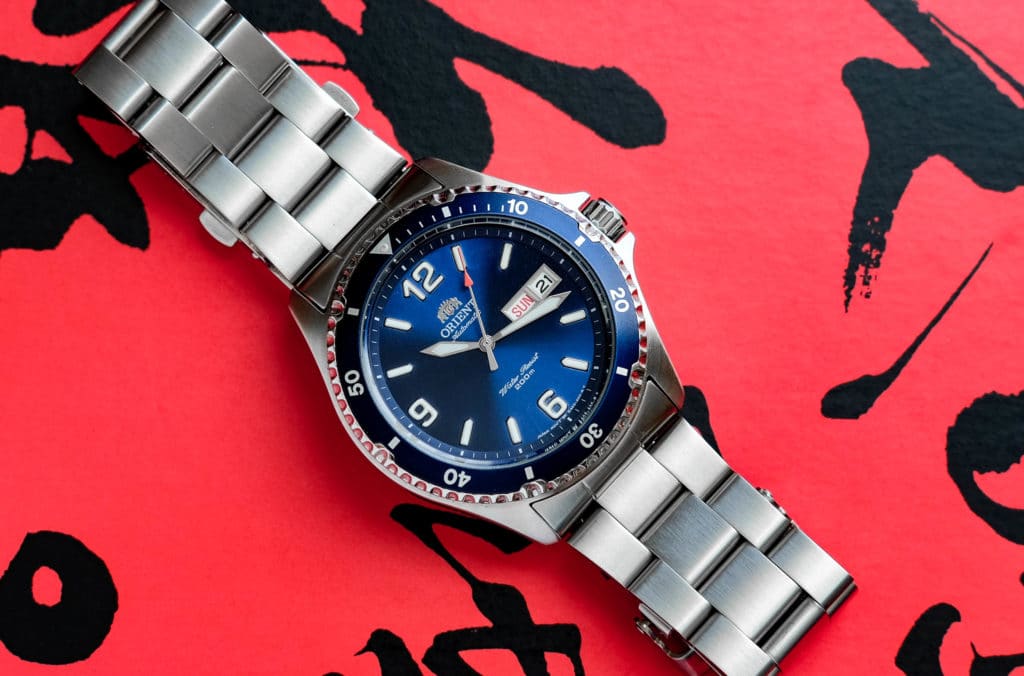
The other secret of the watch world is that most of the watch collectors you’re going to meet are just crazy people. There are collectors out there who think $10,000 is affordable. In short, these collectors are insane and are not worth listening to. Sure, $10,000 may be a drop in the bucket to some, but for the rest of us that live on this planet called Earth, that’s not a reasonable amount of money to wear on your wrist.
That said, it’s important to contextualize what an “affordable” amount of money is in the watch world. For our list below I’m featuring those brands we’ve reviewed which offer high quality, exemplary timepieces for under $500.
Casio Watches
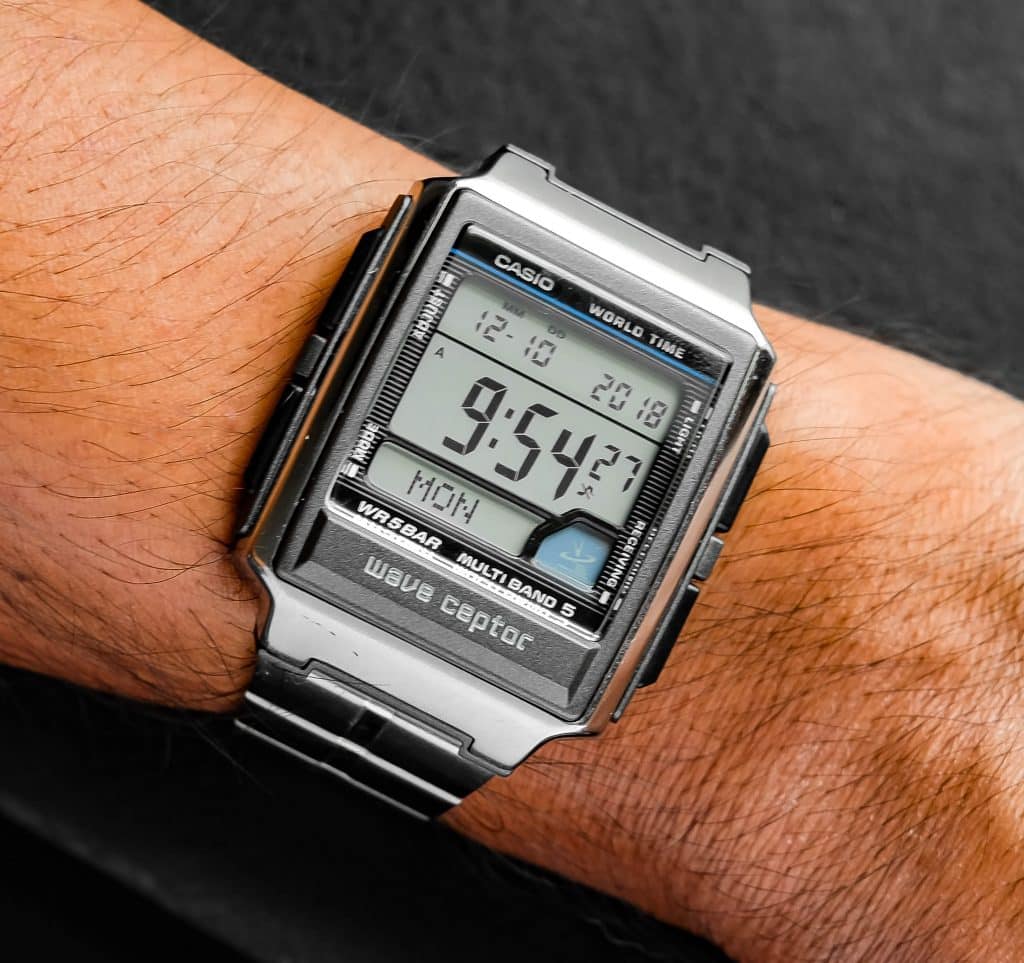
Casio taps into the perfect blend of nostalgia, utility, and design minimalism with a consistency that few brands at its price point can match. Founded in postwar Japan in 1946 and rising to prominence during the 1970s, Casio became a household name by pioneering digital watches that defined the retro-digital aesthetic.
But there’s more to Casio than just vintage charm. The core focus of the brand is to pack as much functionality, usability, and value into each model as they can. With standard features like solar charging, atomic timekeeping, and chronograph timers, our review team has always found that the iconic brand priorities function over fluff. Button placement is always intuitive for the intended function of the watch and while displays can appear busy at first glance, we’ve always found them to be optimized for functional clarity (once you get over the learning curve). There’s so much to explore with Casio – we encourage you to learn more in our hands on reviews of the F91W and Wave Ceptor (WV-59DJ-1AJF).
Pros
- Deep horological history at an affordable price
- Excellent real-world functionality in ultra-light cases
- Iconic retro design with modern-day usefulness
- Huge variety of models with distinct feature sets
- Smart trade-offs in materials for durability and cost
Cons
- Digital aesthetic isn’t for everyone
- Some features may feel redundant in the smartphone era
- Metal bracelets often disappoint in quality
- Strap swaps typically require lug adapters or mods
Timex
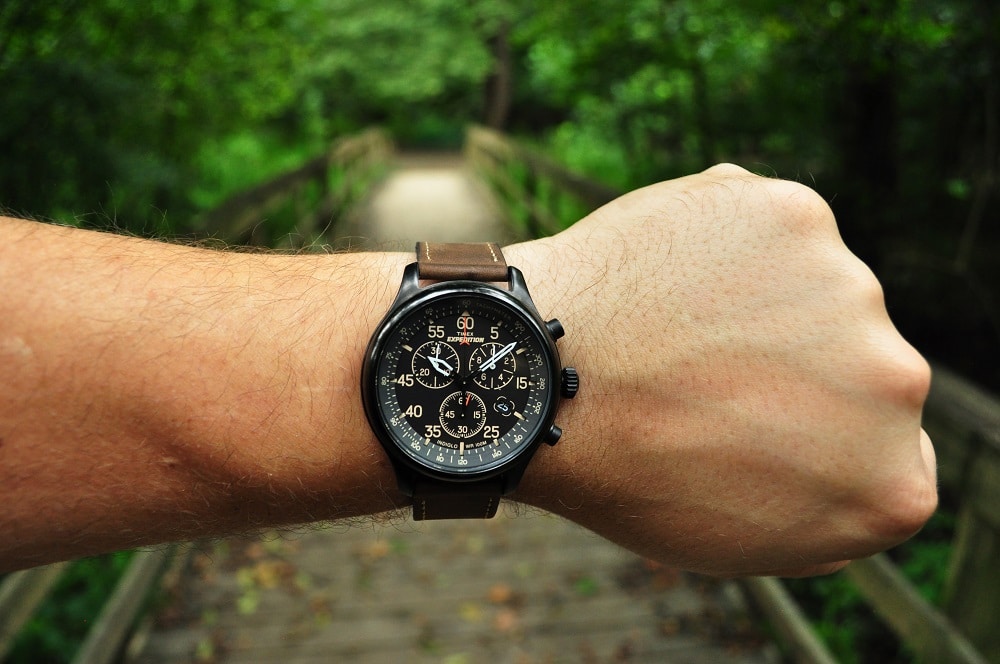
Timex has been building watches since 1845, and that legacy shows in its ability to consistently balance price, wearability, and practical design. Originally known as the Waterbury Clock Company upon it’s original founding, Timex grew into one of America’s most prolific watchmakers, delivering a high-volume of durable timepieces that pushed technological advancements, style, and affordability for a century and a half.
Modern Timex models is the manifestation of this American horological spirit and is hands-down one of our most recommended affordable watch brands. While they utilize more cost effective materials like brass and acrylic, our review team has always found the craftsmanship and fit and finish to be extremely on point. Plus, with features like Indiglo backlights and incredibly legible dials as standard on nearly all their offerings, you’re not compromising on the functionality of your timepiece. While the brand does feature some pieces with mechanical movements, it’s the quartz Timex models we’d suggest steering towards for the best bang for your buck. You can read more about that in our full reviews of the Weekender, Q Timex, and Expedition Chronograph.
Pros
- Longstanding American horological legacy
- Strong value for practical, everyday features
- Wide style variety across field, dress, and casual categories
- Indiglo backlight
- Consistent affordability and availability
Cons
- Primarily quartz (limiting appeal to mechanical enthusiasts)
- Second-hand alignment issues on some models
- Conservative styling across many lines
G-Shock
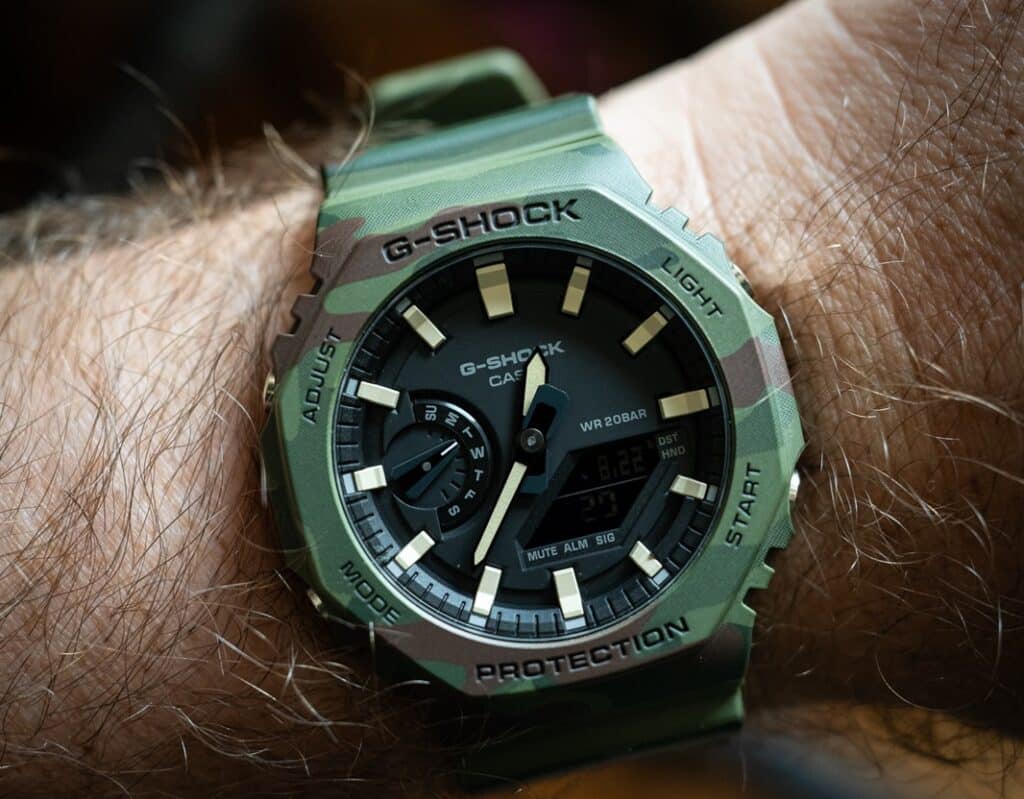
G-Shock watches are designed with one goal in mind: survive harsh conditions without failing. Born from Casio in the 1980s, the line was engineered around a simple challenge—build a watch that could endure any fall a human could (and then some). That principle still defines their core lineup today. While the materials they use have defined their style, resin, carbon, and steel are the true backbones of the watches ability to absorb shock. Amongst all the G-Shocks that our review time has spent time with, we’re always impressed by the brand’s ability to perfectly blend a design vision while not diluting the required dependability of these materials. You’ll also find that for most of the models, button layouts are designed to be used with gloves and displays are characterized by a balance of multiple data points and practical legibility. Even the cheapest models pack more durability and function than rivals gear costing ten times more.
The G-Shock lineup feels overbuilt in the best way possible. That said though, there are some trade-offs. Most models are quite thick and can’t fit under shirt cuffs and in terms of style, it’d be hard to pull off a G-Shock in professional office settings. However, there’s no denying that the brand has defined the gold standard for rugged, depending timepieces. You can read more about our experience with G-Shock in our CasiOak, Mudmaster, and DW9052-1V reviews.
Pros
- Extreme durability and shock resistance
- Unmatched functionality per dollar
- Huge range of models, styles, and colors
- Purpose-built materials and construction
- Proven reliability in extreme conditions
Cons
- Large cases can wear bulky on smaller wrists
- Strap changes are difficult or impossible on many models
- Button layouts can require manual reading
- Poor cuff compatibility due to case height
Invicta
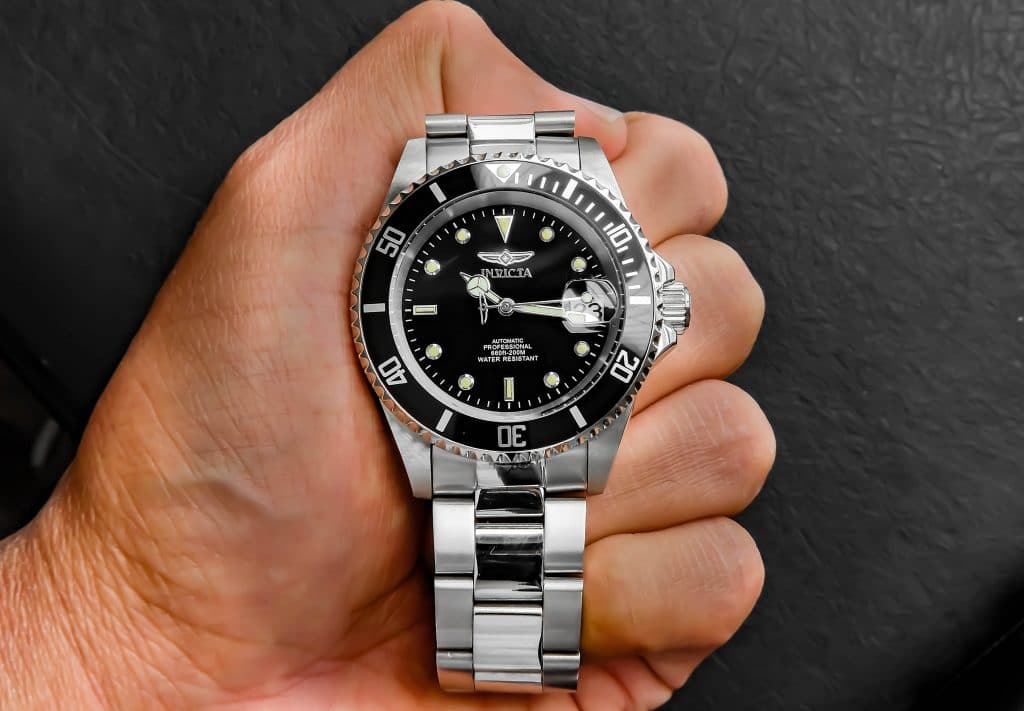
Invicta’s history is slightly complicated and often misunderstood, but its appeal as an affordable watch brand is quite clear: maximum specs for minimum cost. Originally founded in Switzerland in the 1830s, the brand went dormant during the Quartz Crisis, changing ownership multiple times. Then they re-emerged in the 1990s with a sharp pivot toward mass-market affordability. While much of its catalog leans into loud, oversized designs, the segment of their offerings that offers the most value is the Pro Diver line.
Our review team has spent a considerable amount of time with the Pro Diver (which you can read the review of) and what we found is that the brand doesn’t offer perfect refinement. You can even go as far to say that their core purpose isn’t to offer original designs. But what they do offer and why they are one of our most recommended affordable brands is a Sub style design with an automatic NH35 movement, 200m of water resistance, solid end links, and very comfortable 40mm case for under $100. That’s a feat that most other brands to this day are unable to adequately compete with. So, yes while the design may not be original and while there could be some fit and finish issues, the sheer sum of parts you’re getting at the price point Invicta is offering is worth your attention.
Pros
- Automatic movements at extremely low price points
- Classic diver styling with wide strap compatibility
- Transparent casebacks uncommon at this tier
- Easy to dress up or down
Cons
- Inconsistent build quality (clasp, bezel alignment, lume)
- Heavy reliance on homage design
- Brand reputation is polarizing
- Lacks refinement in finishing and materials
Swatch
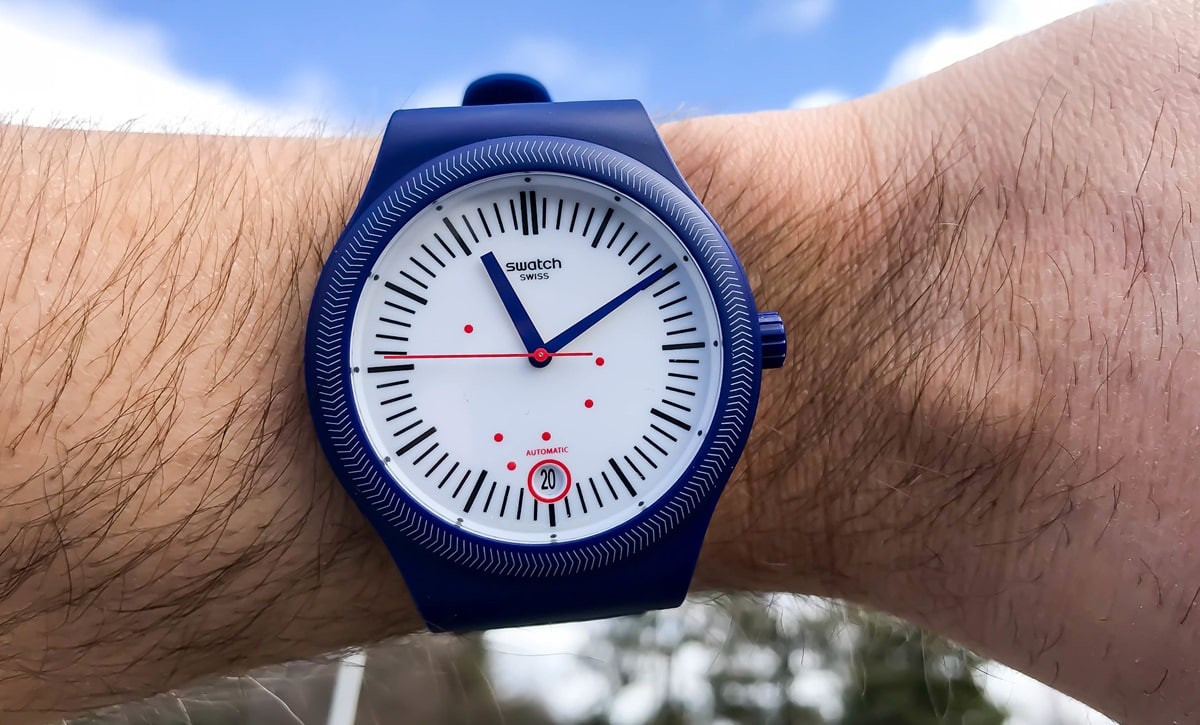
Swatch emerged from the Quartz Crisis not as a technical response, but as a cultural reset. Where traditional Swiss brands tried to double down and lean conservative in the 1970s, Swatch leaned expressive by offering bold, graphic-forward watches built with cost-cutting ingenuity and a clear point of view. The concept was simple: reduce complexity, lower price, amplify style, and make Swiss made watches more affordable.
Most models feature sealed plastic or bioceramic cases, quartz or Sistem51 automatics, and integrated straps that can limit customization. These are all examples of Swatch prioritizing aesthetics and style over serviceability and functionality. That’s not necessarily a bad thing – what Swatch has shown us over the years is that sometimes you just want a watch that’s expressive of your style without feeling like it needs to be a spec-driven, rugged, and reliable watch. At the end of the day, no other affordable watch brand offers a timepiece that’s simply as fun as a Swatch. You can read more about our hands-on experience with Swatch in our Sistem51 review.
Pros
- Swiss-made with highly original styling
- Lightweight and comfortable on wrist
- Affordable way to experiment with color and design
- Broad cultural footprint and collaborations
Cons
- Most models are non-serviceable
- Integrated straps limit personalization
- Scratch-prone materials and low lume performance
- Some designs feel overly playful or niche
Citizen
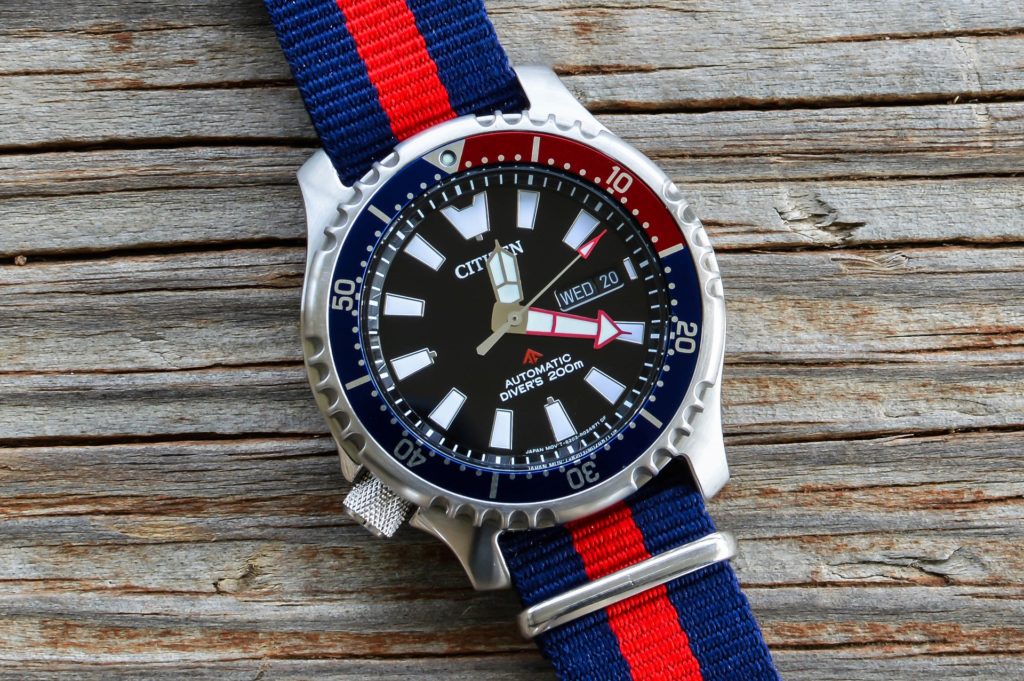
Citizen has been building watches since the early 20th century, and that century of refinement shows in its consistent focus on manufacturing autonomy, reliability, and technical practicality. The Japanese brand pioneered solar quartz movements with Eco-Drive in the 1990s, using light-powered systems to remove the need for battery changes – technology that now powers much of its catalog.
Across both quartz and mechanical models, Citizen watches deliver ergonomic case shapes, strong lume, and movements selected for longevity. Materials like mineral glass and non-hacking automatics do show up in some of the more affordable models, but never without intention. Crowns are positioned for comfort, dials favor legibility over styling tricks, and cases hold up through real use. This is a brand that builds with the long view in mind while keeping their prices affordable. Please feel free to learn more about our hands-on experience with Citizen in our Promaster Diver (BN0151-09L), Fugu Dive Watch (NY008-11E), and Avion (AW1361-10H) reviews.
Pros
- Eco-Drive solar technology removes the need for battery swaps
- Excellent durability and reliability across most models
- Wide range of dress, field, and dive options
- Good lume, thoughtful ergonomics, and consistent case design
Cons
- Many models favor solar over mechanical (a con for purists)
- Can’t leave solar watches in dark storage for long periods
- Use of mineral glass in many models
- Some older automatic calibers lack modern features like hacking
Seiko
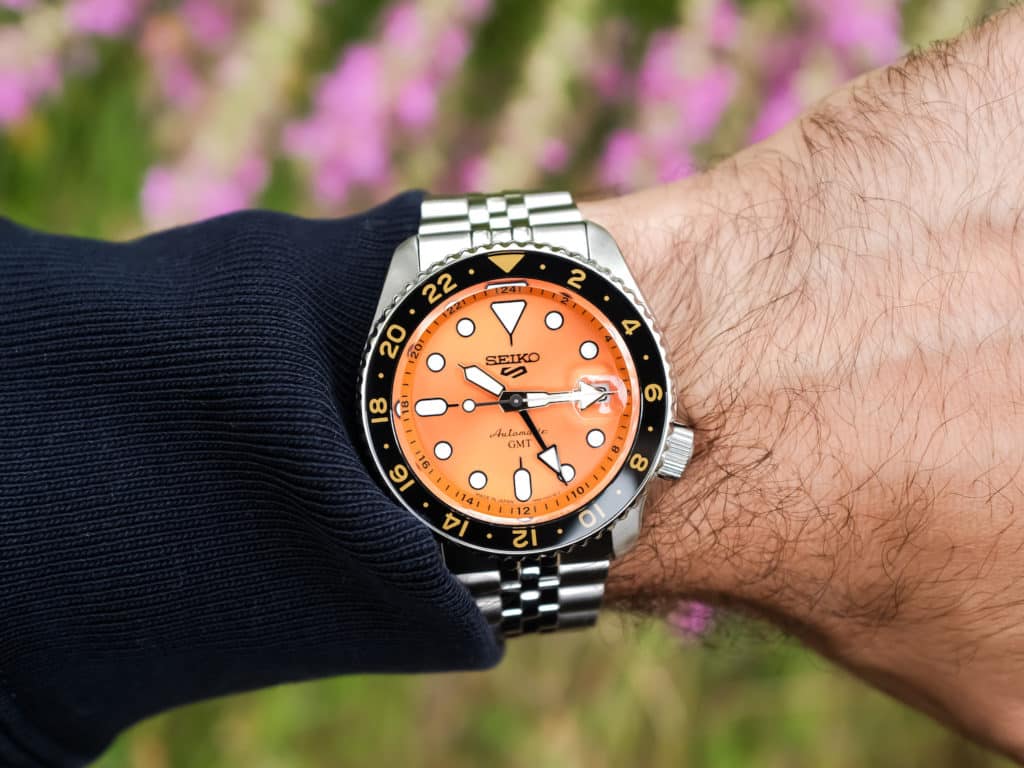
Seiko has been building watches since 1881 and that 100+ years of experience informs the design, craftsmanship, and functionality of even their most affordable models. From mechanical Seiko 5s to dive-ready Prospex tool watches, the brand delivers practical case dimensions, strong proprietary lume, and reliable in-house movements without drifting far from the sub-$500 range in most cases.
With a design language spanning across dress style, sports, and everything in-between, our review team has always been struck by how well their watch cases wear despite what the official measurements state. For example, a case may technically measure 42mm or more in diameter, but a shorter lug-to-lug span can help create a most wrist-friendly wearing experience. Also, some of their more prolific in-house movements (like the 4R36 and 4R34) won’t will any awards for precision, but they hack, wind smoothly, and continue to operate dependably under most demanding conditions. Seiko has masted the craft of balancing craftmanship, specs, features, and style while keeping things incredibly affordable. You can learn more about Seiko in our SKX173, Seiko 5 GMT, and 5KX reviews
Pros
- Broad lineup of mechanical watches under $500
- Great lume and ergonomic case shapes
- Movements offer hacking, hand-winding, and solid reliability
- Balanced designs across dress, dive, and field categories
Cons
- Use of Hardlex over sapphire on many models
- Accuracy can vary between units
- Some models still show fit and finish inconsistencies
Orient
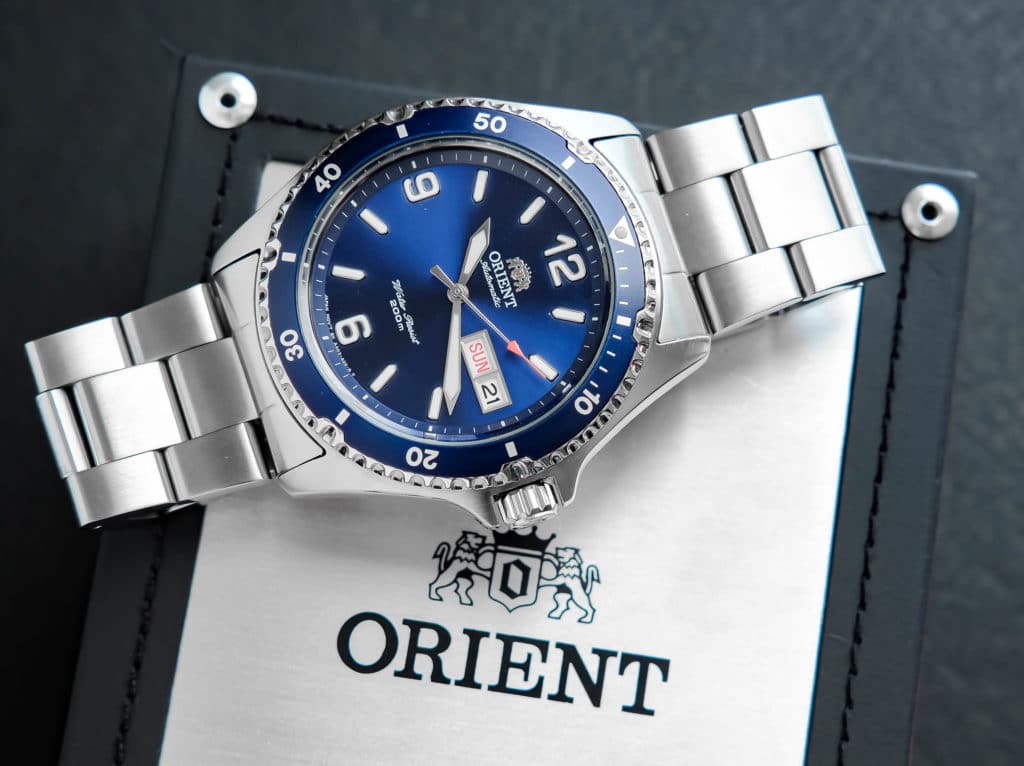
Orient began as a Japanese wholesaler of imported timepieces in the early 1900s and transitioned into full-scale watch production by the middle of the century. Today it’s known for offering fully in-house automatic movements and clean design executions at entry-level prices. While often compared to Seiko, Orient carves out its own space through bolder dial choices, dressier aesthetics, and a focus on mechanical value.
Of all the Orient timepieces our team has reviewed, it’s their dive watch collection that we truly believe offers the most value for your dollar. They feature a surprising amount of refinement, often employing dynamic case polishing techniques, applied markers, 200m of water resistance, and more while keeping the price point under $300. While you may experience some tradeoffs with bracelet quality, accuracy, and an unusual 19mm lug width, Orient is still hands-down one of our favorite affordable watch brands. You can read more about our team’s thoughts on Orient in our Mako II, Ray II, and Kamasu reviews.
Pros
- In-house automatic movements across all core models
- Sapphire crystals on many sub-$300 watches
- Clean design and strong value in both dive and dress categories
- Excellent fit and finish for the price
Cons
- Accuracy can be inconsistent out of the box
- Non-standard lug widths limit strap options
- Some older models still use mineral crystals
Dan Henry Watches
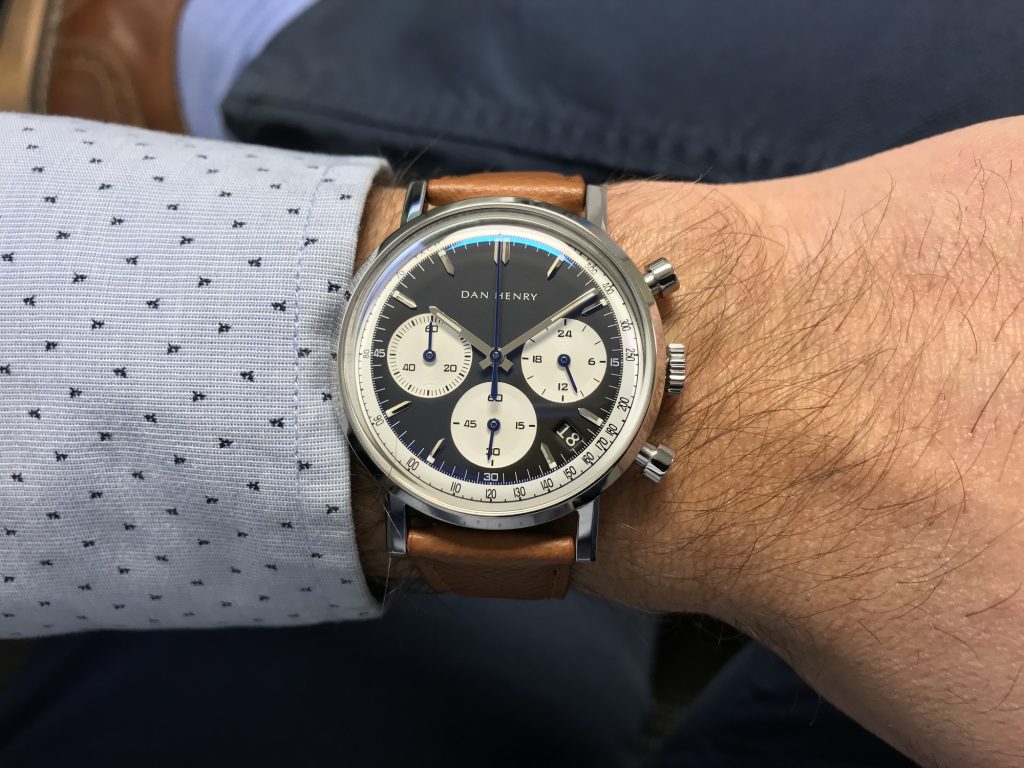
Dan Henry watches are built around a clear design thesis: vintage-inspired style, accessible pricing, and practical sizing without pretense. Started by and named after Dan Henry (one of the most prolific vintage watch collectors on earth), the brand launched with the goal of offering modern takes on classic vintage pieces from his collection for the affordable watch market.
What our review team and I have truly come to appreciate is that the brand’s designs aren’t necessarily homages – rather, they’re reinterpretations of tropes, themes, and aesthetics from iconic vintage pieces. The movements that the brand uses can range from meca-quartz chronographs to Miyota automatics, which keep costs down and can be utilized to fulfill the design vision of the dial layout. Materials like mineral crystals and stainless steel lean utilitarian. But details like solid end links, push-button clasps, and quick-change straps give each watch a highly finished feel. You can learn more about the brand in our reviews of the 1970 Compression Diver, 1972 Alarm Chrono, and 1964 Gran Turismo.
Pros
- Strong vintage design language without overreaching
- Wearable dimensions across all models
- Solid finishing and attention to detail under $300
- Thoughtful pairing of movements to layout logic
Cons
- Mineral crystals across most models
- Limited water resistance on some references
- Few mechanical options for purists
- Brand lacks long-term heritage
Scurfa Watches
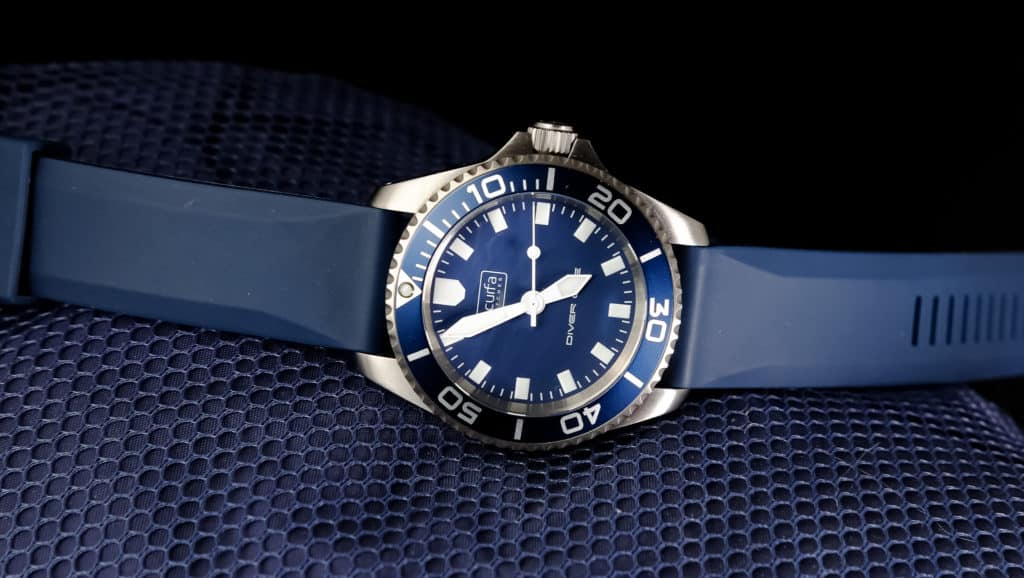
Scurfa was created by a professional saturation diver and it shows in the timepieces. This is a brand that doesn’t simulate tool-watch aesthetics – it builds watches that function in actual deep-water conditions. As such, there’s no lifestyle branding or design gimmicks – the core focus of Scurfa is real world functionality at unbeatably affordable prices.
Cases wear lighter than expected thanks to titanium or compact sizing. Dial layouts are legible, bezels grip cleanly, and details like domed sapphire, drilled lugs, and helium valves are standard. Movements are quartz or automatic, selected for durability and serviceability. The straps work. The crowns seal tight. The lume glows when it should. It’s that straightforward. You can read more about our hands-on experience with Scurfa in the Titanium Diver One review.
Pros
- Designed by a working saturation diver
- High-spec features at sub-$300 price points
- Functional materials: titanium, sapphire, drilled lugs, reliable lume
- Excellent wrist ergonomics and grip under pressure
- Durable, purpose-driven design with zero filler
Cons
- Quartz-heavy lineup may not appeal to mechanical enthusiasts
- Limited styling variety—most designs are dive-focused
- Brand recognition still niche outside tool-watch circles
- Strap options are utilitarian, not fashion-forward

Co-Founder and Senior Editor
Kaz has been collecting watches since 2015, but he’s been fascinated by product design, the Collector’s psychology, and brand marketing his whole life. While sharing the same strong fondness for all things horologically-affordable as Mike (his TBWS partner in crime), Kaz’s collection niche is also focused on vintage Soviet watches as well as watches that feature a unique, but well-designed quirk or visual hook.
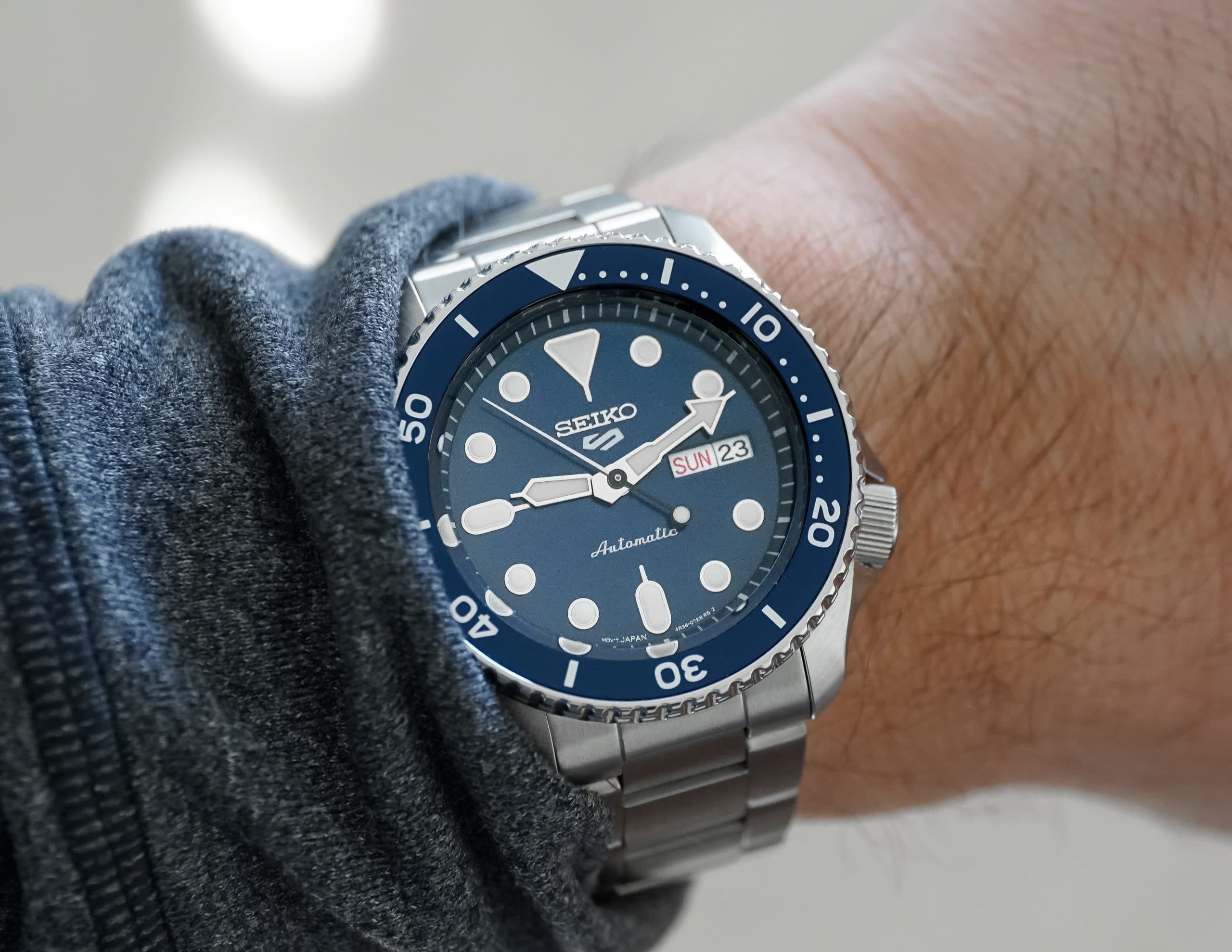
Worth checking out Independent, a sub-brand of Citizen. Quality of models may vary, but I have a dive watch clone (looks like an Invicta ProDiver or Orient Mako II).
Pros: – price equivalent of USD 100 from my go-to Singapore online watch seller.
– sapphire crystal glass, unscratchable (unlike my Mako II’s mineral crystal).
– unbranded but high quality Japan automatic movement. Keeps pace with electronic timekeepers, gains about 25-30 sec per week if uncorrected.
– not advertised as such, but the watch is capable of hand-winding.
– very readable black dial, good lume.
– 100 mtr water resistance, so it’s good for swimming and shallow diving.
– screw case back.
– strong, well-made stainless-steel peripherals.
Cons: – solid-cast bezel, looks as though it would rotate, but doesn’t (no biggie, in my view).
– no screw-down crown, but the crown is protected by lateral lugs ( when swimming, I’ve never missed having a screw-down crown on a watch and have yet to encounter a problem, so long as the watch has a screw case back and the WR rating is at least 50 mtr).
– only three settings for bracelet adjustment, so can be tight, depending on one’s wrist size.
Overall, I’m very happy with this particular model.
Can you please tell the model number?
Thanks
Where’s Gallant?
Really should have included Fossil watches.
I have approximately 30 watches. Most in the $20-$45 range. 3 heirloom watches that should honestly be $1,000+ just for the history alone. But obtained for an average of $150.
Four watches that retail for $200-$350 new. (Two purchased used for a $200 discount over new.)
Anyway I have enough watches to wear a different watch every day of the month at work. So much fun to mix things up.
Now to the funny part…a co-worker who wears a smart watch and also owns a Fossil Watch ($120) commented one day that he would never wear his Fossil to work. (Warehouse) But doesn’t realize the $200-$350 watches I wear once a month.
Timex and Stührling should be up there. Timex should be your first getting into watches. I personally have a 40mm easy-reader with a black leather strap and Arabic numerals. So simplistic and elegant and you won’t leave the house without it. Only runs for about $65.00. From Stührling, they’re mesh steel watches are fantastic build quality and runs for only about $75.00.
I’m late to the party but I’d suggest Certina definitely belong here. They have a long history and heritage with some classic mid 20th century models. They are every bit as good as Hamilton or Tissot but often overlooked.
If your into quartz watches maybe. Not seeing any value here after checking them out.
I like reading the other brand recommendations here so I can research and learn about them. Quality being affordable is important. I prefer mechanical to quartz every time and I have both. I prefer vintage to new but have both. What I find odd is the popularity of “diver” watches when 1 out of hundred using them have never dived. Perhaps it helps with their fear of going across bridges, lol.
“What I find odd is the popularity of “diver” watches”
I’m with you. A great many people prefer divers and so many look nearly the same from two feet away. They have become so common and cliché. Oh well, we are in the minority; divers are like SUVs; some people like the appearance of adventure, even if their intended capability is never used.
Agreed. Though my 5-watch collection includes a Mühle-Glashütte SAR Rescue Timer (rated to 1000 meters), it looks nothing like the stereotypical dude-with-no-imagination Rolex Submariner clones that every man in the world seems to own. Their ubiquity alone makes them less attractive to me (as well as being ugly). Now, if you needed a proper diver, I get it. Still, utility got me into watch enthusiasm when I needed to quickly track a second timezone while working on another continent. So while I have a purely decorative Cartier as my grail (challenge achieved!), each watch fills a useful niche. Also, I always prefer something a little different: instead of a diver, I have the M/G mentioned above, I’ve got a 24-hour Glycine Airman (the timezone watch), and a Mido GMT for a 12-hour multi-timezone dress watch.
Glycine: Probably the only watch named for an amino acid.
Dan:
legitimately made me laugh out loud – I don’t know why I ever associated the brand name with that.
Best,
-Kaz
Indeed. I still have my diver and wear it occasionally, but at 72, after cancer, I no longer dive. Still, it’s a good, accurate watch, not a Rolex. But mostly I wear a Timex Easy Reader or my Seiko solar tank homage. Comfortable, light, tell me the time!
I meant to say 99 out of 100 have never dived! We need an edit function!
On the budget end, Seiko has some sub brands, namely Pulsar and Lorus. For the UK watch enthusiast, a large brick and mortar retailer who specialises in holding massive stock accessible at any time, Argos (popularised before the invention of internet shopping), stocks Lorus routinely and often gives generous discounts on already inexpensive watches. I have recently picked up a “dive style” model, 43mm, drilled lugs, 100m WR, Seiko SOLAR calibre (V182 I think) for $60. Get this, the bezel is ceramic! But it’s also fixed 😱
If you want cheaper, you can get regular quartz for $30.
Another solid affordable swiss brand to check out would be Glycine. I just ordered their Combat Chronograph in a Reverse Panda Blue and it really punches above its sticker price. Feels very solid and premium, and price-wise offers more VFM than many other brands. Definitely on the level or even better than the entry level Tissot quartz or Hamilton.
Two watch makers that deserve a mention are Aquatico, from Hong Kong, ( great line on their watches) and Spinnaker.
Regarding the comment about dive watches, not necessarily for diving but nice knowing that you don’t have to worry about water problems.
Aragon watches are affordable and their build quality typically belies the price. Sapphire crystal, ceramic, and tungsten are used often for the bezel and Seiko and Ronda are automatic movements frequently used.
Another brand that started life as a homage watch maker and now also makes their own designs is San Martin out of China. They range from $200-$450 and quality is equivalent to watches in the $500-$2500 range. Build, specs, and movements are all high quality. Their $300 watches surpass $1000 Seikos by far and their bracelets are as good as Glycine’s. I have Seiko’s, Tudors, Hamilton’s and Glycine’s and they hold their place in the top of the pile. Worth a look and a try
Eterna?
Have a look at Bering watches. Very good quality watches with Japanese movements.
Bulova would’ve been a nice addition to this list. The 262Khz models are horological standouts and models like the Lunar Pilot offer enough history to be a conversation starter at any dinner party. For the price, they punch above their weight class.
Bulova. They pioneered many things in watchmaking, marketing, design, etc. In a rare class for historical American companies in general, not even limited to watch companies. They i, made the most accurate watch on Earth (Accutron), made tons of watches for the US Military, and had a watch go on a Moon missing in 1971. I could go on and on with their innovations and historical significance. Yes they are now owned by the Citizen Watch Group but they still have strong ties to their lineage as an independent American brand and they reissue many classic designs.
Hi, John:
Oh wow – yes! Bulova absolutely will be included on this list when we revisit it soon. I think Bulova is an easy one for watch folks to forget about because they tend to be readily available and they make so many models that it’s hard for people to pin down the overall vibe of the brand. But as long as Bulova keep leaning into their history then I think that’ll be the right direction for them. I’m not really too swayed by their modern day collabs or anything lol.
Best,
-Kaz
I would also include Glycine. For all appearances, Invicta has left them alone (although some descriptions say “finished” or “all finishing done” in Switzerland). But good luck finding a very thin automatic Swiss dive watch good to 660 ft with a Sellita movement for under $300 on a regular basis from authorized retailers. See the review of the combat sub here on this site.
P.S. I dive my dive watches. Even my Omega. I don’t fully trust computers (or even quartz divers), as electrical systems + h2o don’t mix well. I’ve had mechanical watches get wet inside but they always got me to the surface safely.
Sorry for the long-winded go on my first submission!
Hi, Crunchmeister:
Absolutely agree! Glycine will be included in our soon to be published update on this piece here. It is a bit of a shame how the brand doesn’t get enough attention or hasn’t really be leveraged properly post-Invicta acquisition…but knowing Invicta… maybe that’s not a bad thing..?
Totally not long-winded at all. I appreciate you taking the time to share your thoughts!
Best,
-Kaz
Vaer and Casio are my fave pieces for this high quality, low price tag category!